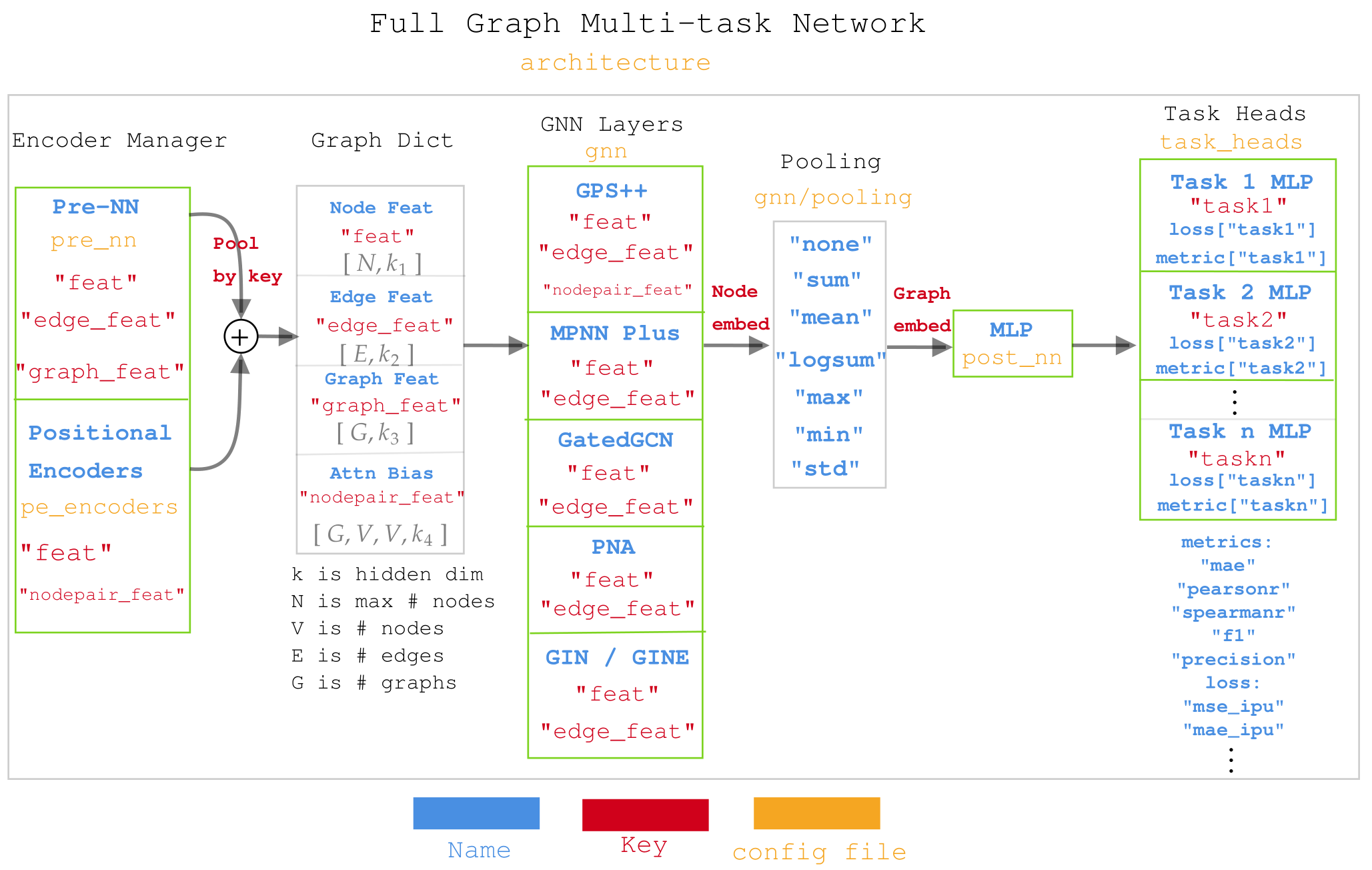A deep learning library focused on graph representation learning for real-world chemical tasks.
- ✅ State-of-the-art GNN architectures.
- 🐍 Extensible API: build your own GNN model and train it with ease.
- ⚗️ Rich featurization: powerful and flexible built-in molecular featurization.
- 🧠 Pretrained models: for fast and easy inference or transfer learning.
- ⮔ Read-to-use training loop based on Pytorch Lightning.
- 🔌 Have a new dataset? Graphium provides a simple plug-and-play interface. Change the path, the name of the columns to predict, the atomic featurization, and you’re ready to play!
Visit https://graphium-docs.datamol.io/.
You can try running Graphium on Graphcore IPUs for free on Gradient by clicking on the button above.
Use mamba:
# Install Graphium's dependencies in a new environment named `graphium`
mamba env create -f env.yml -n graphium
# Install Graphium in dev mode
mamba activate graphium
pip install --no-deps -e .# Install Graphcore's SDK and Graphium dependencies in a new environment called `.graphium_ipu`
./install_ipu.sh .graphium_ipuThe above step needs to be done once. After that, enable the SDK and the environment as follows:
source enable_ipu.sh .graphium_ipuInstalling graphium makes two CLI tools available: graphium and graphium-train. These CLI tools make it easy to access advanced functionality, such as training a model, extracting fingerprints from a pre-trained model or precomputing the dataset. For more information, visit the documentation.
Under the Apache-2.0 license. See LICENSE.
- Diagram for data processing in Graphium.
- Diagram for Muti-task network in Graphium











